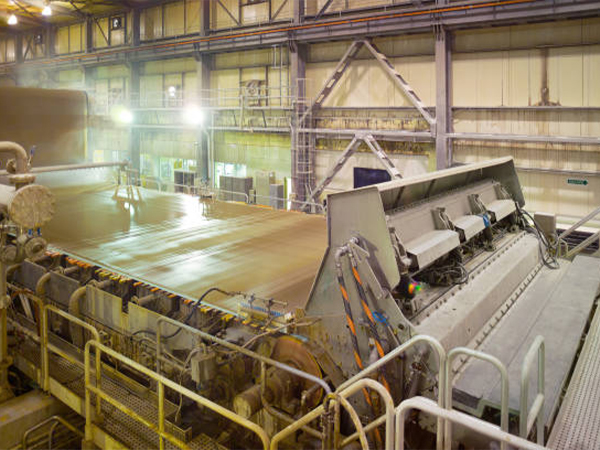
Defoamers in Papermaking help you control unwanted foam during production. Foam can disrupt machine operation and reduce the quality of your finished paper. You improve efficiency and maintain product standards when you choose the right defoamer. The global market for defoamers in this industry shows significant growth, with a projected CAGR of 5.4% from 2025 to 2032.
| Market Size (2025-2032) | Projected CAGR |
|---|---|
| Significant growth | 5.4% |
Key Takeaways
- Control foam effectively to enhance production efficiency and maintain high paper quality.
- Choose the right type of defoamer based on your specific process needs and foam characteristics.
- Regularly monitor foam levels and adjust defoamer dosage to prevent operational issues.
- Utilize silicone-based defoamers for quick action and polyether-based for harsh conditions to optimize performance.
- Evaluate the environmental impact of defoamers and select biodegradable options when possible.
Introduction: Foam Problems in Papermaking

Where foam occurs in the process
You encounter foam at several critical points in the papermaking process. Foam often forms when surfactants and certain chemicals mix with the pulp. Fatty acid soap, rosin soap, and lignin derivatives also contribute to foam generation. You may notice foam when residual sulfurous acid waste liquid or sulfate waste liquid remains in the system. Chemicals such as sizing agents and retention and drainage aids can further increase foam levels.
Foam formation typically occurs during two main stages:
- The pulping stage, where raw materials break down and mix with water and chemicals.
- The paper production stage, where the pulp transforms into sheets.
Tip: Monitoring these stages closely helps you identify foam issues early and apply Defoamers in Papermaking more effectively.
Negative impact on production and quality
Foam creates several operational challenges for your mill. You may see fluctuations in the concentration of the headbox, which leads to unstable flow of paper material. Foam can close micropores on the wet paper web, making dehydration difficult and affecting sheet uniformity. You risk reduced bonding strength between paper layers, which results in defects like foam holes and spots.
Common operational issues caused by foam include:
- Interference with machinery
- Reduction in paper quality
- Production inefficiencies
In coated paper processing, excessive foam may overflow, disrupt normal operations, and pollute the environment. When foam ruptures during drying, it can leave depressions on the paper surface, reducing smoothness and print quality. By understanding these impacts, you can see why effective foam control is essential for maintaining high standards in your operation.
How Defoamers Work
Mechanism of foam control
You face foam issues because surfactants and other chemicals stabilize bubbles in your papermaking system. When you add defoamers, they act quickly to disrupt this stability. Silicone defoamers, which often contain polydimethylsiloxane (PDMS), lower the surface tension of the liquid. As these defoamers spread across the foam, they push away the surface-active agents that keep bubbles intact. This action weakens the bubble walls and causes them to burst. Hydrophobic particles, such as fumed silica, can boost this effect by creating weak spots in the foam structure. You see rapid bubble collapse and a clear reduction in foam. This process keeps your system running smoothly and prevents the negative effects of excess foam.
Note: You can improve foam control by choosing a defoamer that matches your process chemistry and foam type.
Key properties for efficiency
You need to consider several physical and chemical properties when selecting defoamers for your mill. The right choice ensures fast foam knockdown and long-lasting performance. The table below highlights important characteristics for common defoamer types:
| Type of Defoamer | Physical Properties | Chemical Properties | Applications |
|---|---|---|---|
| Silicone | Excellent surface activity, hydrophobic, thermally stable | Quickly reduces surface tension, maintains activity in acid environments | Coatings, textile printing, papermaking |
| Polyether | Good water solubility, miscible with water phase | Spreads on foam surface, low toxicity to microorganisms | Fermentation, detergents |
| Mineral Oil | Forms thin oil film on foam surface | Interferes with foam elasticity and stability | Cost-sensitive industries like papermaking |
| Fatty Acids/Esters | Adsorbs on foam surface | Changes surface properties, promotes foam coalescence | Food, pharmaceuticals |
You should also test defoamer performance before full-scale use. Common methods include compatibility testing, benchtop foam height measurement, and field trials in your actual process. You can use advanced tools like Py-GC/MS to detect silicone defoamers in pulp fibers and deposits. These steps help you confirm that your chosen product works well with your system and delivers reliable results.
Tip: Regular evaluation and consultation with specialists help you maintain optimal foam control and adapt to changes in your process.
Types of Defoamers Used in Papermaking

Silicone-based defoamers
You rely on silicone-based defoamers for their strong defoaming power and versatility. These agents contain polydimethylsiloxane, which lowers surface tension and breaks down foam quickly. You see them used in many papermaking systems because they work well across a wide temperature range and resist chemical reactions. Their physiologically inert nature means they do not contaminate your product or harm operators.
| Advantages | Disadvantages |
|---|---|
| Wide applications | Poor durability |
| High defoaming efficiency | Reduced effect in oil systems |
| Thermal stability | Not ideal for long-term high-temperature use |
| Chemical stability | Poor alkali resistance |
| Non-toxic | |
| Low cost, no pollution |
Silicone-based defoamers dominate the global market due to their effectiveness. However, you must manage challenges such as poor dispersion in water and risks of deposition. You may notice reduced performance in oil-rich environments, so careful selection is important.
Tip: You can improve foam control by combining silicone-based defoamers with other types for specific process needs.
Polyether-based antifoams
You choose polyether-based antifoams when you need strong foam inhibition and compatibility with harsh process conditions. These second-generation agents resist high temperatures and strong acids or alkalis. You benefit from their ability to reduce chemical usage, often achieving dosage reductions of 40-60% compared to conventional defoamers. This leads to significant cost savings and improved drainage rates, which can boost machine speed and lower energy consumption.
- Polyether-based antifoams offer:
- High temperature resistance
- Strong acid/alkali resistance
- Lower bubble breaking rates than silicone types
- Narrower application field
You may find polyether-modified polysiloxane defoamers in research and development. These combine the strengths of both polyether and silicone types, but they come with higher production costs.
Fatty alcohol types
Fatty alcohol defoamers provide effective foam control during many papermaking processes. Their unique molecular structure allows them to penetrate foam and displace stabilizing agents. You see bubbles collapse as fatty alcohols reduce the surface tension of the liquid. These defoamers work best in water-based systems, but you must formulate them carefully to ensure optimal performance.
- Key features of fatty alcohol defoamers:
- Effective foam reduction
- Enhanced penetration into foam layers
- Need for precise formulation in water-based systems
You may use fatty alcohol types when you want a balance between efficiency and environmental safety. Water-based defoamers, including some fatty alcohol formulations, are biodegradable and do not contain harmful solvents or VOCs. This supports your sustainability goals in Defoamers in Papermaking.
Note: You should evaluate each defoamer type based on your process requirements, environmental impact, and cost-effectiveness.
Benefits of Effective Foam Control
Stable machine operation
You keep your papermaking machines running smoothly when you control foam effectively. Foam can cause unexpected stops and increase maintenance needs. By using the right defoamer, you reduce downtime and keep your equipment in top condition.
- You experience fewer interruptions during production.
- You spend less time and money on repairs.
- You maintain a steady workflow, which helps you meet production targets.
When you manage foam, you also prevent foam-related defects that can slow down your process. This leads to a more reliable and efficient operation.
Improved sheet quality
You notice a clear improvement in your paper’s quality when you use Defoamers in Papermaking. Foam disrupts the flow of pulp slurry, which can lead to uneven sheets and weak spots. With optimal foam control, you achieve:
- Smoother pulp flow and better dewatering on the paper machine
- Uniform and strong paper sheets
- Fewer visible defects, such as holes or spots
You also benefit from optimized wet end chemistry. This approach increases your production, improves sheet strength, and helps you save energy. You use less water and fiber, which supports both quality and sustainability goals.
Cost savings through reduced rejects
You lower your production costs when you minimize foam-related waste. Foam can cause defects that force you to reject finished sheets. By controlling foam, you:
- Reduce the number of rejected products
- Save on raw materials and energy
- Spend less on maintenance and cleaning
You see a direct impact on your bottom line. Effective foam control means you use resources more efficiently and deliver higher-quality paper to your customers.
Amazon Chemicals’ Defoamer Portfolio
Azpc® Si-D02 (silicone defoamer)
You can rely on Azpc® Si-D02 when you need powerful foam control in your papermaking process. This silicone-based defoamer uses advanced polydimethylsiloxane technology. You see rapid foam breakdown and stable performance, even under tough conditions. Azpc® Si-D02 works well in both acidic and neutral environments. You benefit from its thermal stability, which keeps your machines running smoothly. You also notice that it does not leave harmful residues, so your finished paper meets strict quality standards.
Tip: You can achieve consistent results by dosing Azpc® Si-D02 at critical points in your process, such as the wet end or coating section.
Azpc® Pe-D01 (polyether defoamer)
You choose Azpc® Pe-D01 when you need strong foam inhibition and compatibility with a wide range of process chemistries. This polyether defoamer resists high temperatures and harsh chemicals. You experience lower chemical usage and improved drainage rates. Azpc® Pe-D01 helps you reduce energy costs and increase machine speed. You find it especially useful in systems where silicone defoamers may not perform as well.
- Key benefits of Azpc® Pe-D01:
- High temperature resistance
- Strong acid and alkali stability
- Reduced foam-related defects
Application support for mills worldwide
You receive comprehensive support from Amazon Chemicals when you implement Defoamers in Papermaking. The company provides technical guidance, product selection advice, and on-site troubleshooting. You can optimize your foam control strategy with their expertise.
| Application Support | Outcome |
|---|---|
| Silicone-based defoamers | Improved efficiency and quality in papermaking process |
| Chemical auxiliaries | Enhanced overall performance in papermaking |
You gain access to tailored solutions that address your specific challenges. Amazon Chemicals helps you achieve higher productivity and better paper quality, no matter where your mill operates.
Achieving Smooth Production with the Right Defoamer
You achieve smooth production in papermaking when you select the right defoamer for your process. The choice of defoamer affects not only foam control but also the efficiency and quality of your final product. You need to consider several important criteria before making your selection:
- Assess the environmental impact and ensure compliance with local regulations.
- Determine the correct dosage by running small-scale tests.
- Add defoamers at points in your system where foam forms most often.
- Choose low to medium viscosity defoamers for industrial use, and medium to high viscosity for food-grade applications.
- Monitor foam levels regularly and adjust the dosage as needed.
- Always follow safety data sheets for proper handling and storage.
To further refine your selection, follow these steps:
- Identify the type of foam present in your system.
- Decide where you will apply the defoamer for maximum effect.
- Check chemical compatibility with other additives in your process.
- Select biodegradable and environmentally friendly options when possible.
- Evaluate performance at low concentrations and under varying conditions.
- Consult with suppliers for technical support and recommendations.
- Test the defoamer on a small scale before full implementation.
- Consider the cost-effectiveness based on performance and required dosage.
- Ensure the product meets all regulatory requirements.
You can see the impact of choosing the right defoamer in real-world cases:
| Case | Coating pH | Initial Defoamer | Result After Switching Defoamer |
|---|---|---|---|
| 1 | 4.5 | Standard defoamer | Significant foam reduction, improved quality |
| 2 | 8.5 | Non-optimized defoamer | Foam eliminated, increased production efficiency |
For long-term effectiveness, focus on these factors:
- Ensure compatibility with process materials and chemicals.
- Select defoamers that remain effective and stable over time, even at low concentrations.
- Avoid products that cause deposit buildup or interfere with catalysts.
- Use defoamers that do not disrupt microbial activity in water treatment systems.
By following these guidelines, you maximize the benefits of Defoamers in Papermaking and maintain consistent, high-quality production.
You play a vital role in maintaining operational efficiency and product quality by using Defoamers in Papermaking. Selecting the right defoamer and applying it at the correct stage helps you address common challenges, such as production inefficiency and equipment longevity.
| Challenge | Solution |
|---|---|
| Slower drainage | Utilize effective defoamer solutions. |
| Increased chemical consumption | Optimize defoamer application. |
| Equipment longevity issues | Maintain foam control to protect equipment. |
Experts recommend monitoring air content and optimizing dosage to prevent deposit problems. You should consult industry resources and specialists for tailored solutions that fit your process.
FAQ
What is the best way to add defoamers to my papermaking process?
You should add defoamers at points where foam forms most often. Use metering pumps for precise dosing. Test small batches first to find the optimal amount for your system.
Can defoamers affect paper quality or machine performance?
You may see improved sheet quality and smoother machine operation with proper defoamer use. Overdosing can cause deposits or reduce bonding strength.
Tip: Monitor results and adjust dosage as needed.
Are silicone-based defoamers safe for food-grade paper production?
You can use food-grade silicone defoamers for paper that contacts food. Always check product certifications and regulatory compliance before application.
| Defoamer Type | Food-Grade Use | Certification Needed |
|---|---|---|
| Silicone | Yes | FDA, EU |
How do I choose between silicone, polyether, and fatty alcohol defoamers?
You should match defoamer type to your process needs.
- Silicone: Fast action, broad use
- Polyether: High temperature, chemical resistance
- Fatty alcohol: Eco-friendly, water-based systems
Consult your supplier for tailored recommendations.






